Spotlight Stories
CEE graduates work in all sorts of fields, including in industry, government agencies, non-profit organizations and more! Hear from some of our graduates below on where their paths have led them, and see our Instagram for more spotlight stories. You can also submit your own alumni story here.
See stories below.
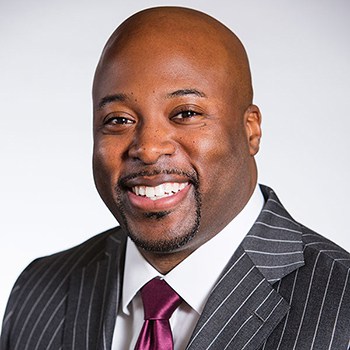
Larry Brinker, Jr.
Chief Executive Officer, Brinker
Career summary
I began my career in the commercial construction industry working at my father’s company shortly after graduating from the University of Michigan. We are a family of five companies that provides a complete range of construction services for commercial developments. Brinker is headquartered in Detroit and has been building and strengthening communities for 30 years. We are driven to learn from the best of the best and give back to those who need it most, and I participate as a member of many boards and associations that are tied to our industry and/or share the values and beliefs of Brinker.
I learned the business from the ground up, working across multiple departments within our general contracting company, L.S. Brinker, where I most recently served as the President. Today, we are at a pivotal point in our growth. Executing on the vision to bring all five of our companies together under the Brinker name has given us the opportunity to leverage our strengths and collectively elevate our industry and community.
Advice to students
Putting the time and care into positive relationships in life is an important piece of advice for students.
I always encourage students to aim for their personal best with integrity, honesty, and confidence.
Set goals that motivate you, strive high, and do not compromise your character along the way.

Imani Carson
Design Engineer (in Civil Engineering), HNTB Corporation
Career summary
Straight out of U-M, I went on to work for Bechtel Corporation for 4.5 years. It was with Bechtel that I gained construction management and engineering experience in the telecoms industry in a number of different states. After Bechtel, I went onto HNTB Corporation, which is where I currently work at now. I provide civil engineering design support for roadway, rail and aviation projects. My design background includes utility design and coordination, drainage design, roadway design, and cost estimating. At HNTB, I get more design experience, and I get the opportunity to use and learn various software such as AutoCAD, Civil 3D, MicroStation, InRoads, and GIS applications (i.e., Esri and ArcGIS).
Advice to students
Take full advantage of the plethora of resources provided at Michigan. Don’t confine yourself to North Campus. If you get the opportunity to study abroad, do it.
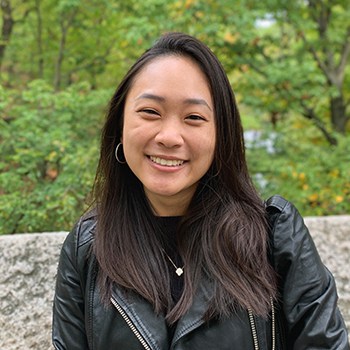
Monicka Chang
Assistant Project Manager, PULLMAN SST
Career summary
After graduating from Michigan in 2019, I moved to Chicago and worked for Turner Construction in their pre-construction division as a Procurement Assistant and later as an Estimating Assistant. A year later, I decided to move back home to New York City and work for PULLMAN SST, a historic restoration company I interned with the summer after my Junior year. I am now an Assistant Project Manager working on the Waldorf Astoria historic restoration project, where I assist with the budget, QAQC, and punchlist. I am also the Project Manager for a small historic restoration project in Central Park, where I am working alongside architects and conservators to clean and repair the masonry facade. While my career has only just begun, I have already been exposed to a wide array of opportunities for growth both professionally and personally and I look forward to what my career has in store for me next.
Advice to students
Don’t be afraid to ask questions, even if you think it may be a dumb one. You’d be surprised how many other people are wondering the same thing you are but are too afraid to ask.
Take advantage of all the opportunities Michigan has to offer while you still can. Join a club. Study abroad. Build connections with your professors. These opportunities will make you stand out from the crowd and will only benefit you in the long run.
Be kind to yourself. Sometimes we can be our own strongest critic, but we can also be our own strongest advocate. While it’s important to always improve on and push yourself, also recognize your accomplishments and how far you’ve come in life already.
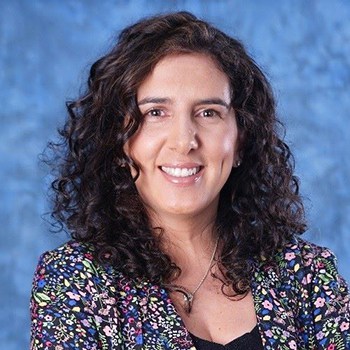
Laura L. Constain-Montoya
Professor, Universidad Piloto de Colombia
Career summary
I started working in 2003 after my bachelors graduation in a structural engineering firm, led by one of my undergrad professors. After two years, I started working at a steel construction firm, where I decided I needed to complete my studies. In 2008 I began my masters in the University of Michigan.
When I returned to Colombia in 2011 I started teaching a concrete course at the Universidad Piloto de Colombia, and I had a full time job in a consulting firm called INGETEC. In INGETEC I was able to do concrete and steel structural design. In 2016 I was selected to be an assistant professor at Universidad Nacional, which is an important position in the academic world, since Universidad Nacional is one of the best universities in Colombia. After winning that position, I decided to become a full time professor and in the summer of 2017 I started as a full time Professor in Universidad Piloto and continued teaching in Universidad Nacional.
Having almost 12 years of structural design experience gave me the background to share real life experiences with the students, and being able to tell how real life designs are developed has been the key of my courses.
Advice to students
My advice for the students is to keep in touch with all the people they have met in their life. You will never know when you will need them and how they can help you.
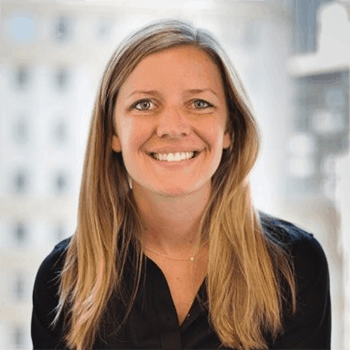
Halle Doenitz
Principal, HD Structural Co.
Career summary
I spent the first chapter of my structural engineering career in NYC working for LERA. I worked in hospitals, museums, and 100+ story high rise towers, among others. In 2017 I had the opportunity to relocate to Los Angeles to manage the $1 billion+ George Lucas Museum of Narrative Art project, the design of which has been the pinnacle of my career. I was the only structural engineer in LA for this project, working side by side with the architects and contractors. I love being on a jobsite just as much, if not more, than being behind a desk. My professional network in Los Angeles grew exponentially during the course of this project.
In 2019 my wife and I decided that we wanted to plant roots in Los Angeles, so I decided to take the risk and quit my job with LERA and start my own company. I’m almost two years in now and I couldn’t be happier with my decision. My work-life balance has improved immensely. I’m lucky enough to have a steady flow of work and I can be choosy about the types of projects I take on. I’m still heavily involved with the Lucas Museum, and that project has opened doors for me to participate in the design of many other significant projects in Southern California.
Advice to students
I spent the first chapter of my structural engineering career in NYC working for LERA. I worked in hospitals, museums, and 100+ story high rise towers, among others. In 2017 I had the opportunity to relocate to Los Angeles to manage the $1 billion+ George Lucas Museum of Narrative Art project, the design of which has been the pinnacle of my career. I was the only structural engineer in LA for this project, working side by side with the architects and contractors. I love being on a jobsite just as much, if not more, than being behind a desk. My professional network in Los Angeles grew exponentially during the course of this project.
In 2019 my wife and I decided that we wanted to plant roots in Los Angeles, so I decided to take the risk and quit my job with LERA and start my own company. I’m almost two years in now and I couldn’t be happier with my decision. My work-life balance has improved immensely. I’m lucky enough to have a steady flow of work and I can be choosy about the types of projects I take on. I’m still heavily involved with the Lucas Museum, and that project has opened doors for me to participate in the design of many other significant projects in Southern California.

Kyle Ebenstein
Athens CMT Manager, Geo-Hydro Engineers, Inc.
Career summary
After graduating, I worked as a temporary janitor for the University of Michigan dorm system (we can’t all come from glory). Almost 3 months of searching and I managed to snag an entry level construction materials testing (CMT) technician position for a local company. My first several years were centered on field and lab work, as we provided quality control testing for the reconstruction of a runway at DTW. Through the years I moved more into project management and out of the hands-on side of things. Ready for a change of scenery and weather, I accepted a position in Athens, Georgia and hopped back into the field. Testing concrete for a 2AM placement is an adventure to say the least! Within about two years I was promoted to my current position as the office manager. Here, I am learning the ins and outs of the business side of engineering, managing a field and lab staff, and developing client relationships.
Advice to students
Raise your hand and ask the d*mn question! As someone who didn’t ask many questions throughout college I can say it is a great skill to have and will help you throughout your career. May you never stop asking questions!
Get your hands dirty. Spend as much time as you can learning in the field. You will be a much better engineer in the office if you learn about what goes on in the field.
Sometimes you learn what NOT to do – and that’s okay! Your failures or oopsies are teaching moments that will mold you into the best engineer you can be. We all fail.
Mentorship is invaluable. Work to find someone who gets you and challenges you. And if it fits you, become a mentor yourself.
Lead with compassion! You’ll change your work environment for the better.
Be yourself! Even if it means being a little non-traditional.

Andrea Hayden
Law Partner, Fausone Bohn, LLP
Career summary
I am currently a partner at the law firm of Fausone Bohn, but I have worked for various companies and law firms throughout my career, each of which have provided me with different opportunities to enhance my skill set and broaden my network. Before practicing law, I worked as an environmental engineering consultant, which gave me a strong technical background useful in the practice of environmental law and business transactions in general.
Advice to students
Whatever you may be interested in, the University has an opportunity to get involved. Joining a student group – any group – is a great way to learn new things, apply what you already know, and meet new people. The academics are very intense and exceptional at Michigan, but taking the time to join a group or two really enhances the college experience. I would offer the same advice in your professional life.
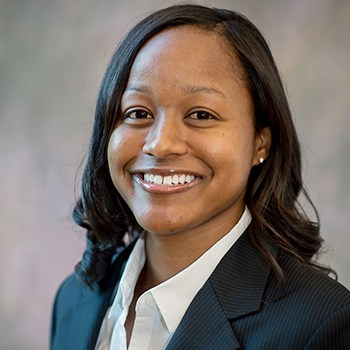
Tara Jackson
Operations Lead, Chevron
Career summary
Jackson (MSE EnvE ’07) says she was drawn to environmental engineering during her undergraduate studies because she “recognized that engineers play a key role in developing a design that minimizes potential environmental impacts.”
She chose to attend U-M for her graduate studies because she wanted to work with Professor Lutgarde Raskin.
“During the summer of 2004, I did research with Dr. Raskin on anaerobic wastewater treatment. I learned a lot in a relatively short amount of time and really enjoyed the research. As a result, I decided to attend graduate school and ultimately decided that it made sense to work with Dr. Raskin again.”
Today Jackson is an operations lead at Chevron in Houston.
“I enjoy that each day has different challenges. I am on a steep learning curve and I am gaining new technical (subsea engineering and flow assurance) skills as well as leadership skills.”
Advice to students
Take the time to enjoy their studies as it is a unique and priceless time in their lives. To prepare for entering the business world, be sure to complete as many internships as possible in different industries and keep an open mind. This approach will help to build your network and give you a good sense of where you would like to work once you graduate

Mina James-Gist
Civil Engineer, Giffels Webster
Advice to students
Career summary
I began work as a Project Manager in Design-Build in construction in Downtown Chicago, mainly focusing on adaptive reuse of existing buildings. I soon realized that I much preferred to work as a designer and headed back to Detroit to work as a civil engineering designer with GW. I now work as a lead designer on awesome projects like the Ford Michigan Central Train Station!
Advice to students
Take your FE in college, you’ll hate having to study again when you’re not in school!
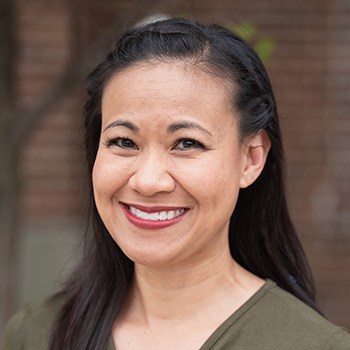
Alisha Lindsay
Project Manager, Environmental Engineer, Envirologic Technologies, Inc.
Career summary
Upon graduation, environmental jobs were scarce, so my first job was as a QA/QC laboratory supervisor for an automotive supply manufacturer. I interacted with all aspects of the business, and learned how to manage and lead others.
Then, I landed a position with an environmental consulting firm and gained engineering experience directly related to my degree. In my ten years there, my career advanced from entry-level engineer to project manager, and I obtained my PE license.
My career took an unexpected turn and I took a structural engineering position with D.C. Cook Nuclear Power Plant. My CEE degree and the curriculum at Michigan definitely played a part. I became an Engineering Outage Manager when there was a catastrophic turbine failure and was part of the team that restored the unit to service. I then supervised the engineering fix-it-now group.
Wanting to get back to environmental work, I took a Project Manager position with the Michigan Department of Environmental Quality. I liked the work, but advancement was limited. I am now a Project Manager – Environmental Engineer for Envirologic Technologies, Inc., a place that aligns well with my career goals and philosophy.
Advice to students
1) Know what your career objectives are. Early on, you may not have a good feel for your objectives, so you can focus on why you picked your field and highlight applicable skills and knowledge. Let you career objectives evolve as you move forward.
2) Your signature is one of your most valuable possessions; do not give it away. Especially as an engineer, your signature brings with it responsibility and liability. Make sure you can stand behind any document, work, project, etc. that you sign off on.
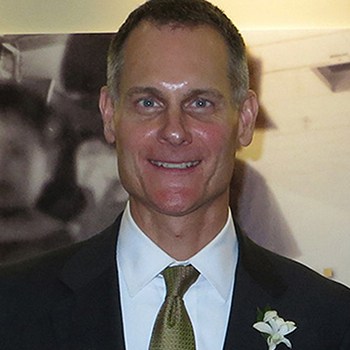
Jeff Jozwiak
Co-founder, Norcon, Inc.
Career summary
“I realized that if I struck it out on my own, I would do what it takes to make it successful,” Jeff Jozwiak (BSE CE ’87) said of co-founding Chicago-based, general contractor Norcon, Inc. Since its founding in 1999, Norcon has grown to manage about $65 million of work a year.As an entrepreneur, Jozwiak recognizes the importance of keeping up with a rapidly changing world and intense competition. “You have to stay ahead of it and continue to innovate,” he said.His team is prepared to take on a new challenge at short notice. A few years ago they were asked to build a home on the television show Extreme Makeover: Home Edition. The proposition came four weeks before construction was set to begin and they had five days to build it. “The key is to set up the leadership and organization structure immediately and then prepare and actively manage a comprehensive schedule.”All efforts and materials were 100 percent donated for Extreme Makeover. The experience set the tone for Norcon to continue to be involved helping families in need. Norcon continues to volunteer with Habitat for Humanity and Jozwiak has been on the board of the local Windy City Habitat chapter for two years. “It feels good to put a deserving family into a new home.”
Advice to students
Jozwiak’s advice to students is to take internships that offer field exposure. He says at Norcon they like to see hands-on construction experience on the resumes of potential project managers. “Being involved in executing the work creates a great base to draw on in the future,” he adds.
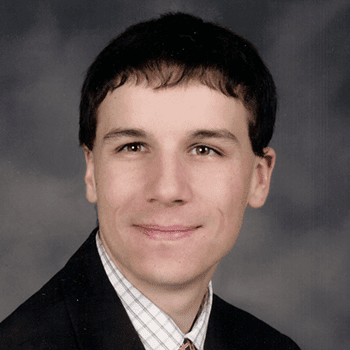
Michael Kane
Assistant Professor, Northeastern University
Career summary
Kane (PhD ’14) came to CEE for his PhD after spending his master’s research measuring miles of sensing cables for the structural health monitoring (SHM) of bridges. For his PhD, he wanted to learn about innovative wireless technologies that would make SHM easier and cheaper to implement, and CEE Professor Jerry Lynch was paving the way.
Kane joined Lynch’s lab and proceeded to develop a next-generation wireless sensing and control platform tailored to civil infrastructure systems. Using the new device, he then developed, embedded and tested distributed model-predictive control techniques for infrastructure systems to improve efficiency and resilience.
This new device is being used by a consortium of universities for wirelessly enabled cyber-physical systems research in civil engineering.
After graduating, Kane became a fellow with the U.S. Department of Energy’s Advanced Research Project Agency – Energy (ARPA-E). “I worked with other fellows and program directors on investing in breakthrough energy technologies,” Kane says. He is now an assistant professor of civil and environmental engineering at Northeastern University.
Advice to students
“University of Michigan has excellence across all disciplines. This allowed me to expand outside the typical box of ‘civil engineering’ and really innovate. With Rackham’s support and Professor Lynch’s international contacts, I was able to travel and understand the diverse world-wide views of civil engineering challenges. My favorite trip was an NSF summer school in Tokyo, Japan.”
His advice for current students is: “Learn to say no. You can’t do everything. Focus on what you find innovative and exciting, resulting in higher quality research.”
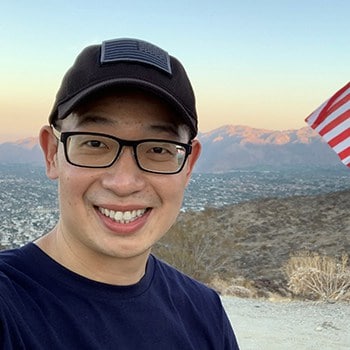
Ken Loh
Professor and Vice Chair, UC San Diego
Career summary
Advice to students
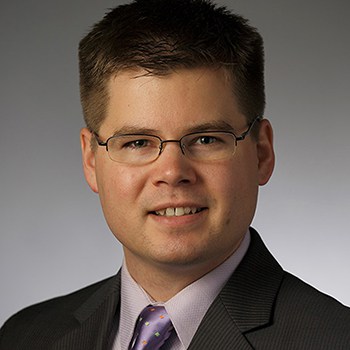
Ken Maschke
Vice President, Thornton Tomasetti
Career summary
Advice to students
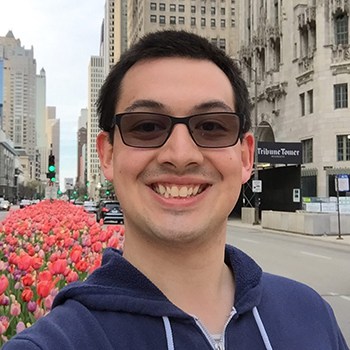
Jacob Molewyk
Staff Engineer, SE3, LLC
Career summary
My time at U-M – especially those whom I worked with and my mentors – had a huge impact on what I do and how I conduct myself professionally today. Armed with my PhD in 2008, I joined Civil Engineering at UC Davis as an Assistant and then Associate Prof. There, I leveraged my structural health monitoring and materials science training at U-M to establish the NESST Lab and expanded my research in multifunctional materials.
In early 2016, I joined UC San Diego and am a Professor and Vice Chair in Structural Engineering. The ARMOR Lab was founded, and our mission is to safeguard and enhance the performance of human and physical assets. I am passionate about stimuli-responsive materials that can sense, augment, or control structural behavior. The coupling of new materials with unique measurement, data processing, and analysis methods has paved the way for exciting new technologies to achieve full-field human performance monitoring, smart prosthetics, soft robotics, damage imaging, and structural monitoring.
In short, U-M has taught me that my career is not limited to what was taught in school but rather how I can exercise and grow that knowledge to the extent of my creativity and passion.
Advice to students
Get involved in student organizations which suit your career interests, attend conferences, pursue internships and research opportunities. Make friends with and get to know not only people who are like you, but also with people from different backgrounds, years in school, and alumni. The more you get to know someone, the more you might learn you have in common with them! If you see an area of room for improvement, be part of the solution and get others involved.
Study abroad if possible. At the same time, don’t overwork yourself or spread yourself too thin, and make sure you have time to study and keep a good GPA. If possible, take your FE exam during your senior year in college so you can have EI/EIT on your resume.
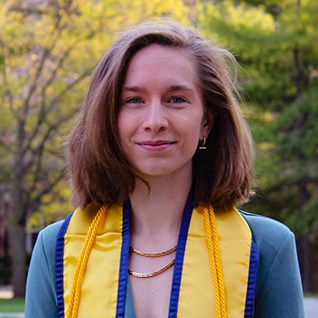
Anna Pasek
Transportation Engineering Intern, City of Ann Arbor; Master’s in Urban and Regional Planning First Year Student
Career summary
My experience as a queer student on campus shaped my worldview. Learning to navigate that piece of myself and understand how to maintain my sense of belonging and importance within all the communities I aimed to be a part of was, simply put, incredibly difficult. Being out and proud in STEM was and is not easy, but I have learned how to identify spaces that are supportive of all of who I am. The more important thing has been learning how to stand tall and make space for myself within communities that would erase my queerness for palatability.
Being a part of Out in STEM at UMich during my time as an undergrad showed me how to use the full potential power of my voice to advocate for both the professional environment that I deserve and that which my fellow queer community members deserve. Having that safe space to grow within has made me into a fearless proponent of what I believe in and a fiercely confident engineering professional, ready to ensure that I am not just heard, but listened to.
Advice to students
What matters most is what you think of yourself. However, a lack of self love is not your fault. The people, places, and things around you all have a huge impact on what you see staring back at you in the mirror. I wish I had known the importance of finding space within which I could express all the pieces of myself equally early on.
While things are changing, there is still plenty of silence in reaction to queer issues and voices on campus, and if I went back I wouldn’t let myself focus so intensely on the pain this causes, but more heavily on finding what resources existed to do something about it.
That being said, I also wish I’d prioritized self care – those outside of the norm often do not realize how much that experience weighs on them and how critical it is to find support.
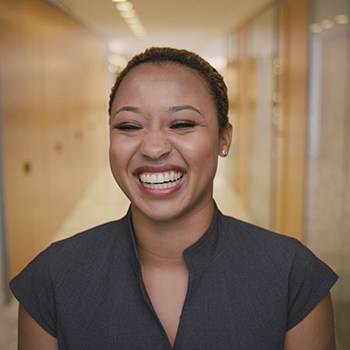
Shelbie Prater
Sr. Associate, Transformation Delivery (Advisory) at KPMG
Career summary
I realized shortly before graduation that while I loved our approach to problem solving, I simply wasn’t passionate about CEE-related problems in the way my peers were. Still a problem-solver at heart, I shifted focus to issues people face in the workplace, issues that companies have as they try to grow and evolve to meet the needs of their people/customers. Now, I solve problems related to workplace transformations (culture changes, system implementations, reorgs, etc.), incorporating human-centered design as a Change Management consultant in KPMG’s Advisory practice. And naturally, just as I help clients create better work environments for their people, I also help KPMG create a more diverse, equitable, and inclusive work environment for myself and my colleagues.
Advice to students
Don’t waste time comparing yourself/your career or academic path to your peers; decide what makes sense for YOU and stand firm in that.
Seek wisdom always, but don’t be discouraged by the failures and fears of those before you; yours is the generation capable of affecting real, lasting change in the world.
Think big. Be bold. Do good. Seek justice for all.
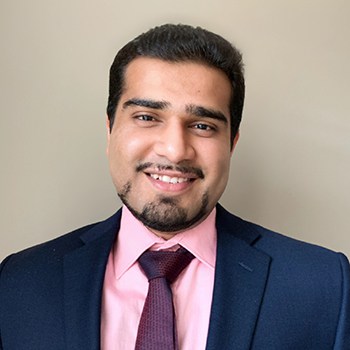
Vishal Shah
Senior Scheduler, Skanska USA Building Inc, Orlando
Career summary
I joined Skanska as a scheduling intern after graduating from my Master’s. Even thought it was a risk starting as an intern after graduation, the reward was spectacular. My studies in CEE500 level courses helped me hit the ground running in this niche job which led to my internship becoming a full time opportunity within 5 weeks. For the last 4 years, I have managed the schedule of a multi-phase $235M hospital expansion in Fort Myers, Florida. Having been recently promoted and transplanted, I am now spearheading the planning and scheduling efforts of all Orlando Office projects primarily focusing on another $180M hospital construction.
Advice to students
Aside from enjoying most of my required courses, I had the opportunity to take a real estate development course as a mangement elective in the Ross School. If you are considering a Master’s in Construction – this is a must have elective – I might even call it a required course.
I was part of Tau Beta Pi which helped me meet some great like-minded Wolverines. By serving the community, we grew ourselves professionally and personally.
I was an active member of ASCE as an undergrad and also attended most of the workshops and networking events hosted by ASCE at Michigan. This is probably the most efficient way to develop a strong network in the construction industry.
For a master’s in construction, the best thing to do is intern at a construction site every summer after your sophomore year. Experience is the gold standard in construction. However, the industry is changing and the requirement for tech savvy (college educated at the least) construction managers is growing rapidly. Having a master’s degree will not only set you apart from candidates your age, it will also help you in a rapid growth at a time when the guard is changing.
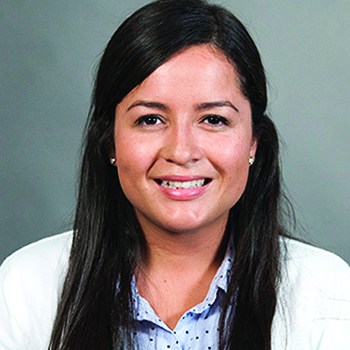
Yanet Zepeda
Senior Engineer at ENGEO Incorporated
Career summary
After graduating with my BSE in 2014, I worked as a field engineer for a geotechnical firm in Michigan performing QA/QC testing and observation on construction sites. The work entailed long hours on sites interacting with contractors. While often challenging, the time I spent working in the field, learning hands-on, was extremely valuable when I returned to Michigan the following year for my Master’s and in my career since.
After completing graduate school, I moved to the Bay Area where I had accepted a position with ENGEO as a geotechnical staff engineer without ever visiting California. It was a large leap into the unknown but I have no regrets. In my work, I perform technical analyses and manage a variety of project types with numerous geotechnical hazards. Consulting can be very demanding but I enjoy the energy!
Outside of work, I am involved in ASCE and served as President of San Jose’s YMF this past year.
Advice to students
After graduating with my BSE in 2014, I worked as a field engineer for a geotechnical firm in Michigan performing QA/QC testing and observation on construction sites. The work entailed long hours on sites interacting with contractors. While often challenging, the time I spent working in the field, learning hands-on, was extremely valuable when I returned to Michigan the following year for my Master’s and in my career since.
After completing graduate school, I moved to the Bay Area where I had accepted a position with ENGEO as a geotechnical staff engineer without ever visiting California. It was a large leap into the unknown but I have no regrets. In my work, I perform technical analyses and manage a variety of project types with numerous geotechnical hazards. Consulting can be very demanding but I enjoy the energy!
Outside of work, I am involved in ASCE and served as President of San Jose’s YMF this past year.